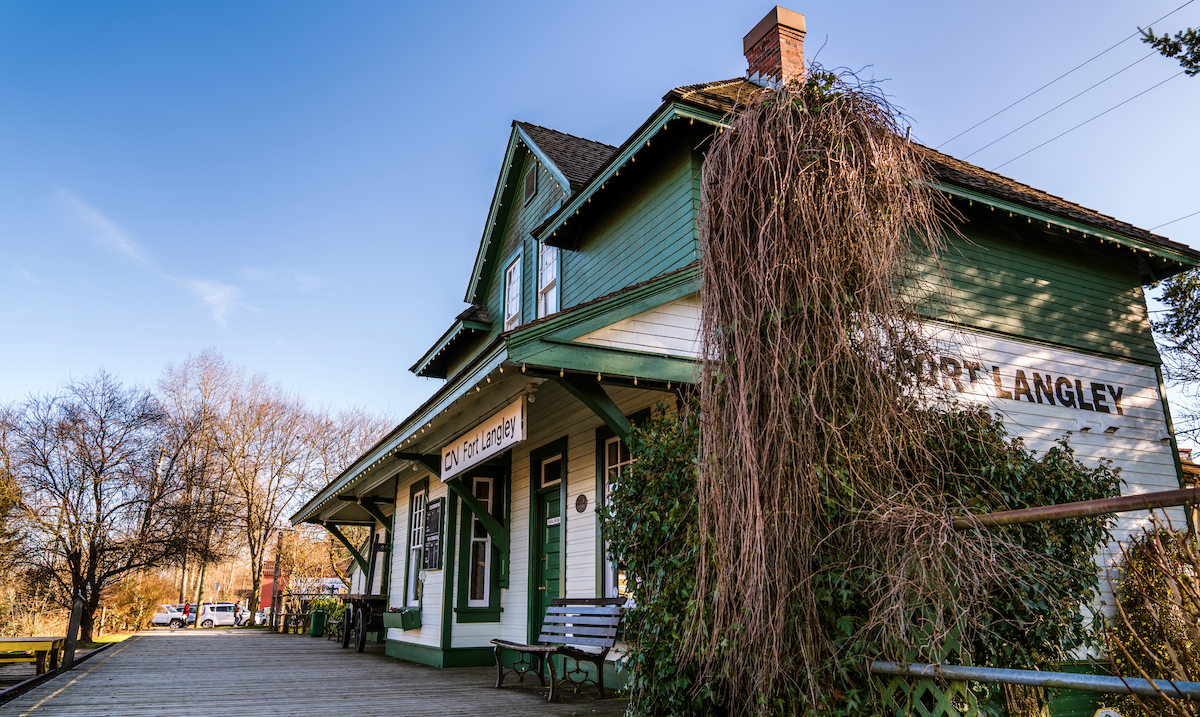Fitness
How Three Parks Directors Channeled Resources Into Outdoor Recreation and Fitness Courses
New outdoor spaces equipped with dedicated fitness and recreation equipment — sometimes alternately referred to as Ninja courses, fitness courts and obstacle courses — are popping up in city and county parks all over the country. They’re intended to broaden user bases while also expanding the definition of free, outdoor recreation. “Outdoor fitness equipment has really changed over the years. I remember there used to just be a steel bar to do pullups and a wooden platform to do sit-ups,” says Troy Houtman, Park & Recreation director for Wichita, Kan., where an outdoor “Fitness Court” opened in May at a city park serving a large Hispanic population. “The new equipment has a QR code that will give you videos of exercises and track your training. Our goal is to put an outdoor fitness center in each of Wichita’s six districts.” “We’ve been trying to do things to accommodate more people,” says Nathan Dawsey, director of Florence County (S.C.) Parks & Recreation, which installed a “Ninja Course” earlier this year designed to attract older teens. “Recreation is more than just stick-and-ball sports, and rec departments are going to have to start doing more creative programming. Otherwise, they’re going to continue to see a decline in the number of kids playing organized sports and being active.” Manufacturers such as Greenfields Outdoor Fitness, BCI Burke and GameTime ® that specialize in outdoor courses — along with the availability of grants, sponsorship opportunities and other funding mechanisms — are helping communities overcome obstacles in bringing these kinds of recreation opportunities to more residents. “There are a number of grant organizations focused on health, wellbeing and recreation,” says Aaron Filipski, director of public services and recreation for the City of Royal Oak, Mich., where a new outdoor obstacle course designed for users between the ages of 13 and 18 is tentatively scheduled to open in September. “Grants maybe won’t cover all of the cost, but they can at least offset some of it. There’s some work that needs to be done when applying, but there’s money out there — federal and otherwise — that communities can leverage to make some of these things come to fruition.”
Royal Oak, Mich.
When soliciting public input for the city’s parks and recreation plan for 2023 to 2027, Royal Oak officials realized there was a lack of amenities for teenagers. “They’re at that age where play structures aren’t something they’re interested in, but they are definitely active and want to burn off some steam,” Filipski says. “We think that the course we’re installing will provide that opportunity.” Dubbed “The Challenge Course” by manufacturer GameTime, the predesigned obstacle course constructed this summer in Lockman Park features sway steps, climbing obstacles and agility trainers — each equipped with instructional placards about how to use them. The course will be nestled into a wooded area on the periphery of the park and is expected to generate interest among both teens and adults. “Once kids get a chance to try it out, I think word will spread pretty quickly,” Filipski says. “Even to me, as an adult, this looks like a lot of fun, and I’d be lying if I said I’m not going to try it myself once it’s completed.” One of the oldest parks in Royal Oak, Lockman Park spans more than nine acres and is a popular destination among residents. It also is part of a community development block grant, which made it an appealing site for the course. “It’s eligible for federal funding for park improvements, based on a number of factors including household income in that area,” Filipski says, noting that that the price tag for the course and its poured-in-place rubber fall zone and other ancillary components was “just shy of $180,000.” Federal funding covered the cost of construction and the equipment. “I’m excited to see how this plays out,” Filipski adds, noting that while there currently are no plans to add a second course at another city park, he’s certainly open to that possibility. “I know there’s excitement in the community about it, and if we can get 13- to 18-year-olds to do more than just hang out at parks — give them something active to do — then this project will be considered a success. If that age group finds it fun and enjoys it, it will have been worth it.” Filipski’s advice (in his own words) : When planning a course like this, make considerations for other age groups that won’t be able to use the equipment. If there’s no other amenity in the park to satisfy those younger ages, there could be an issue. In our case, there was an existing play structure that was meant for a younger demographic, and it was kind of written out of the park without much notice. Eventually, the neighbors and park users caught wind of the project, and they were super-excited about the new course. But it created a little bit of controversy that in exchange for the new course, the equipment for the younger age group was being removed. So we had to pivot and reorient where the new course would be relative to other features in the park. By doing so, we were able to keep the existing structure.
Florence County, S.C.
A one-cent sales tax, approved by voters and used to fund several recreation projects in Florence County over the years, covered the approximately $273,000 needed to build the new Ninja Course at Brooks-McCall Park in Florence. Designed to mirror courses used on NBC’s “American Ninja Warrior,” obstacles include platform leaps, swinging beams and a 10-foot scalable wall. The course is intended to fill a fitness and recreation equipment gap for older teenagers and young adults. “It’s a fantastic park with a walking track, a water feature, a playground. But, frankly, I don’t think it was getting the kind of traffic it deserved,” Dawsey says. “People hadn’t really noticed it, because it’s not on a heavily traversed road. After we installed the course, we started getting comments that people didn’t even know a park was there at all.” The penny sales tax has been used to build large athletic complexes and Miracle Fields, as well as make improvements to other parks, according to Dawsey. He cites the importance of community needs assessments in helping recreation officials find their niche. For Florence County, that niche has become nontraditional programming that also includes a new esports program and the construction of a 27-hole disc golf course. Racing courses for drones and radio-controlled cars also could be developed in the near future. The “X-Treme Ninja Course” from Greenfields Outdoor Fitness lives up to its name at Brooks-McCall Park. “I couldn’t finish it,” Dawsey admits. “It’s extremely tough. Fun, but extremely tough. People have been posting videos of them completing the course and the excitement that brings. Then, you’ve got the videos of myself and some of the other staff members failing miserably.” Signage at the course explains how to navigate each obstacle, and QR codes take users to the Greenfields website for even more details. The course also has bolstered traffic throughout the rest of Brooks-McCall Park. “Word of mouth travels fast,” Dawsey says. “The obstacle course has drawn more people there to have birthday parties or family gatherings.” Dawsey’s advice: “Yes, there is a level of risk involved with this type of course, but it’s the same thing with playgrounds. You introduce a level of risk into play to help kids grow. That’s where the fun is, and there’s risk in everything we do. You can get hurt walking along a track. [Risk] is certainly something we had discussions about, but just because there’s a risk is no reason not to do something that, frankly, people have a lot of fun with — as long as they’re using the equipment in the way it was designed to be used. We have signage, and they know what they’re supposed to be doing and what they’re not supposed to be doing.”
Wichita, Kan.
The new fitness court at Pat Garcia Veterans Park is just the beginning of an ambitious plan to install similar courts in each of Wichita’s six park districts, and another one downtown. Houtman has even chosen the locations. “We want to focus on equity across the city,” he says. “We picked the first site because it was donated land in a primarily Hispanic community that really needs an amenity like this. Here’s our school of thought: Your health and wellness are up to you, but we are giving you a resource that is absolutely free. I want to make sure we can provide that resource all across the city.” He hopes the court becomes the foundation to allow tracking of health initiatives and outcomes that provide data on diabetes, weight loss and other metrics for residents in the area. Wichita Parks & Recreation also has developed several instructor-led fitness classes at the Fitness Court that guide users through exercises at its seven zones — core, squat, push, lunge, pull, agility and bend — to help them get a full-body workout. Instructors who teach aerobics classes in Wichita’s multiple community centers responded to the city’s request to develop programming at the course, and nearby McConnell Air Force Base personnel use the course for training, too, according to Houtman. The price tag for the Fitness Court was about $180,000, which included amenities to comply with the Americans With Disabilities Act. But the city only paid $120,000 — thanks to grant money available through a partnership between Blue Cross and Blue Shield of Kansas and the National Fitness Campaign, which seeks to expand free access to fitness equipment. The city’s capital improvements fund covered any outstanding costs. Houtman notes the investment is much more feasible than building a new multimillion-dollar community center, adding that the fitness components in the city’s eight existing community centers are limited. “This is a very cost-effective way of providing health and wellness opportunities to the community,” he says.










